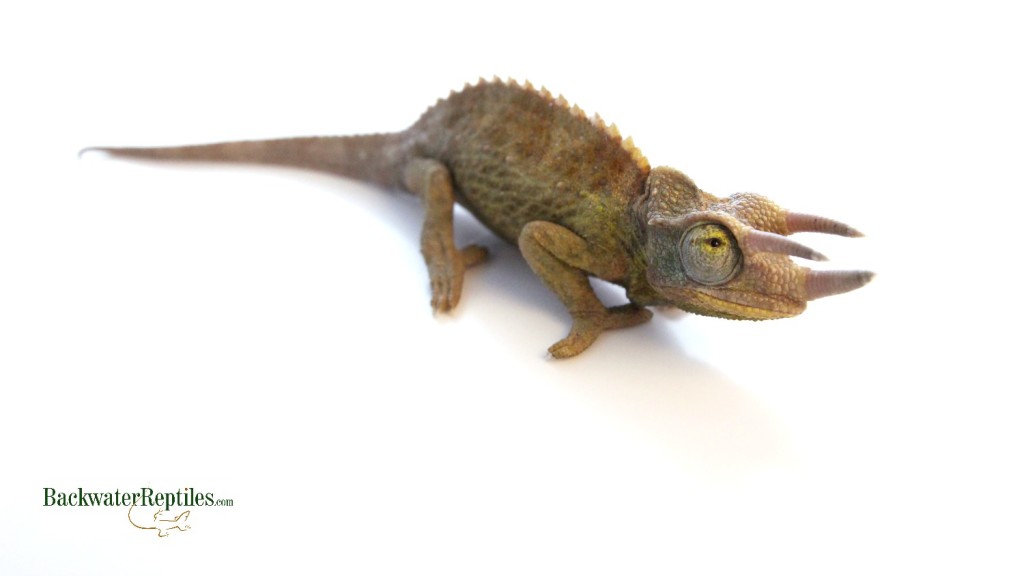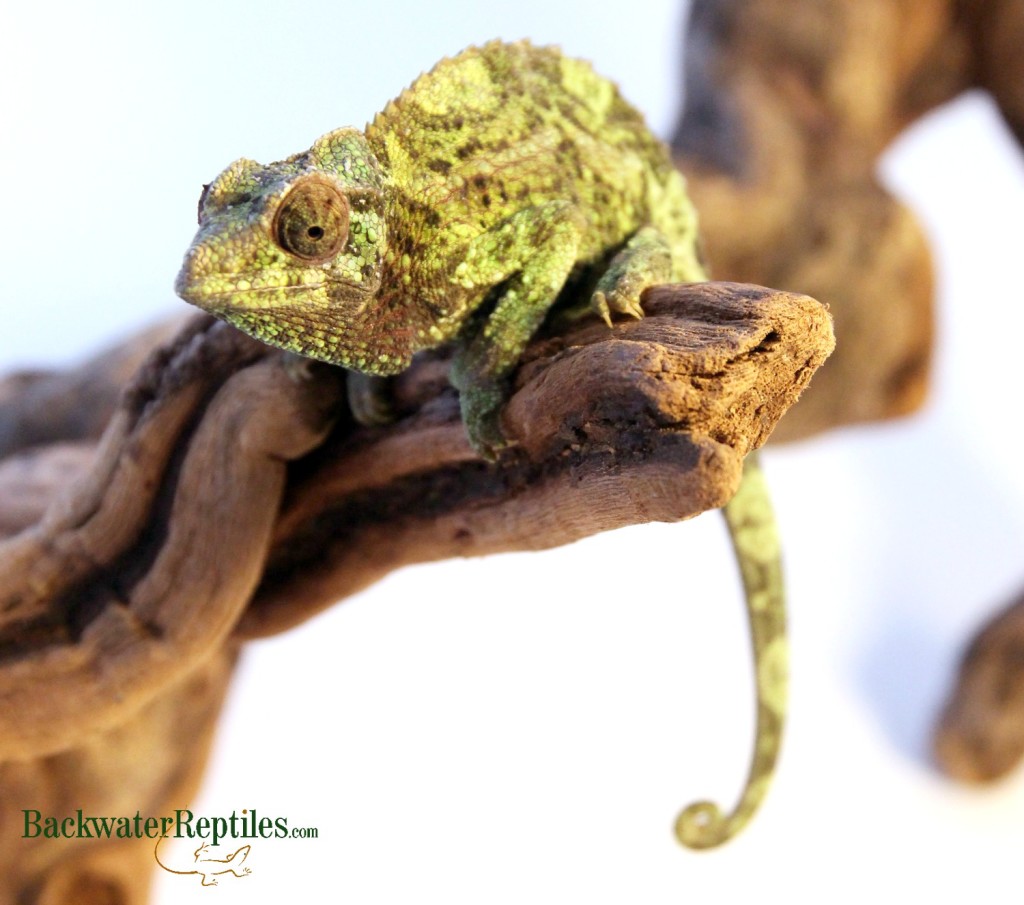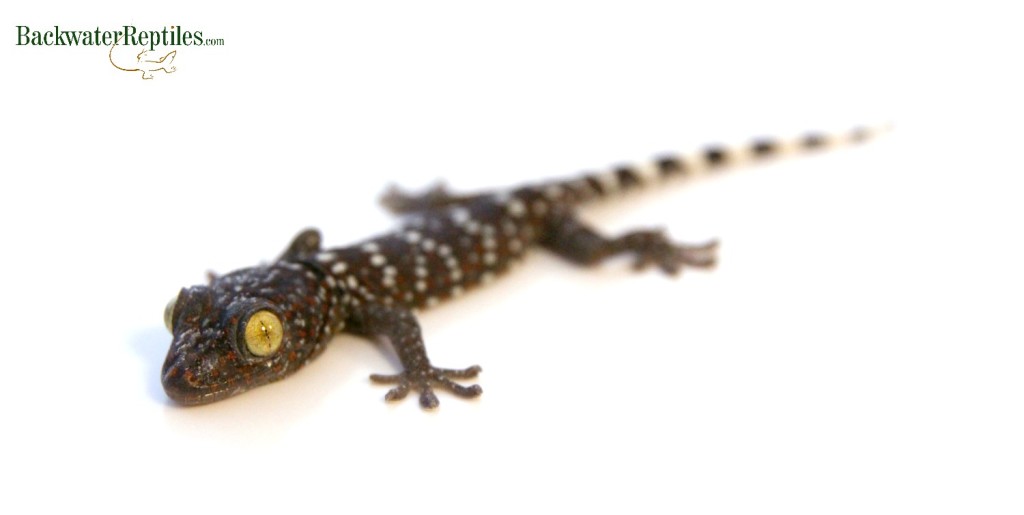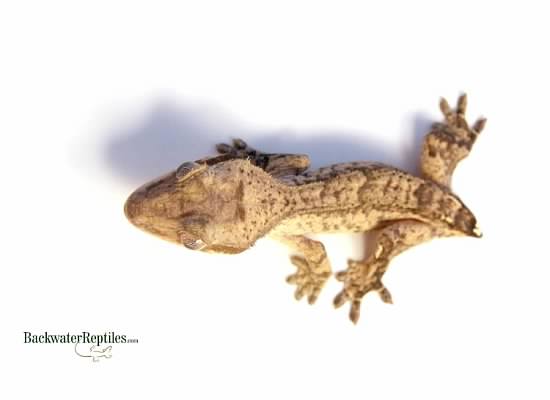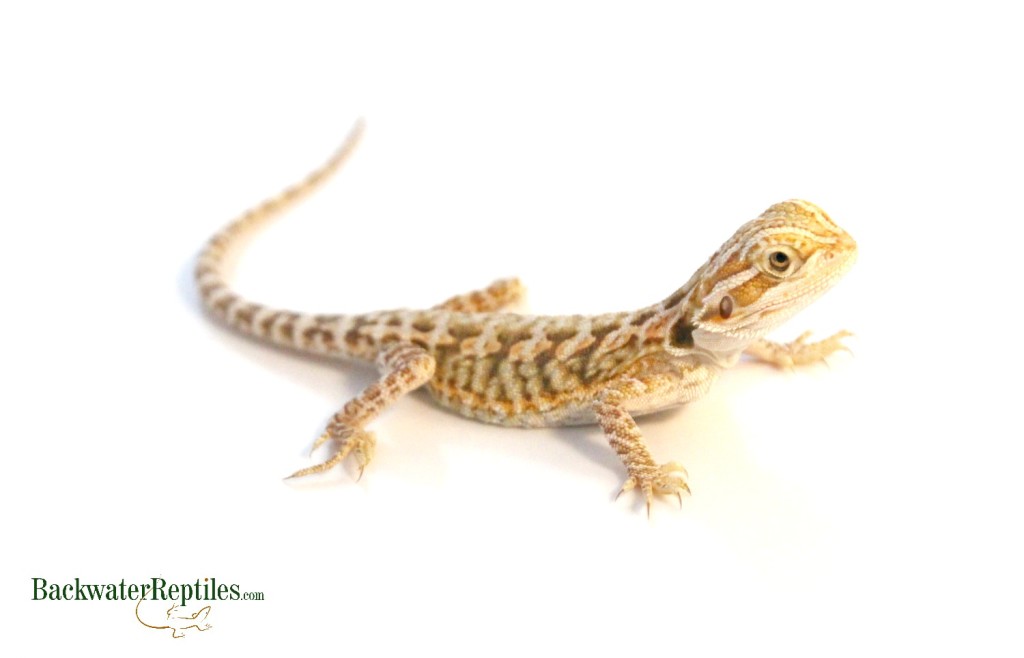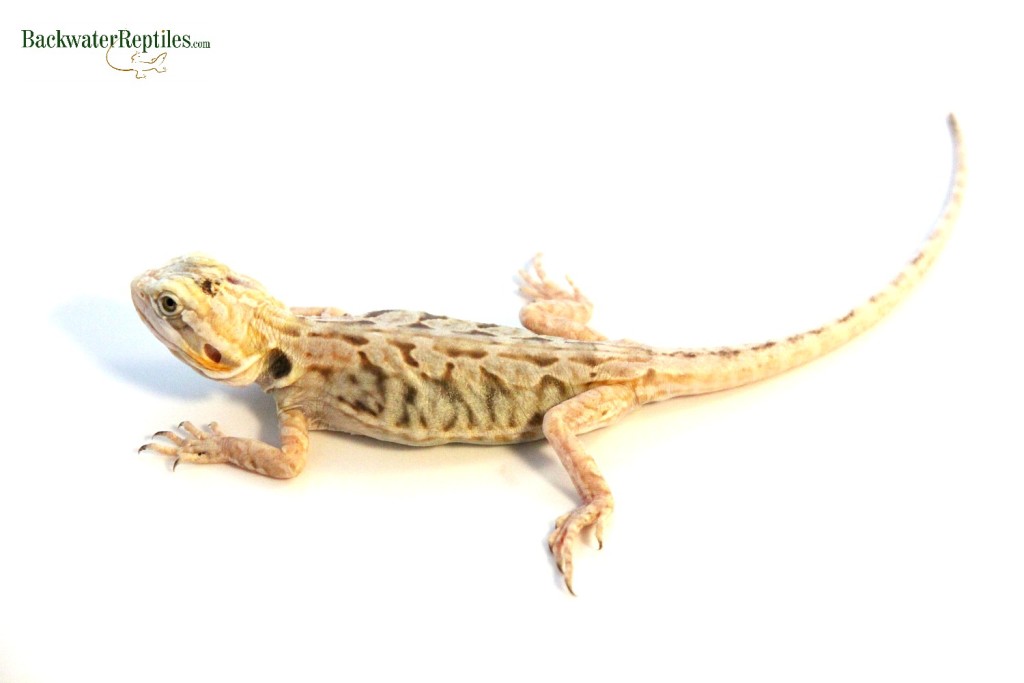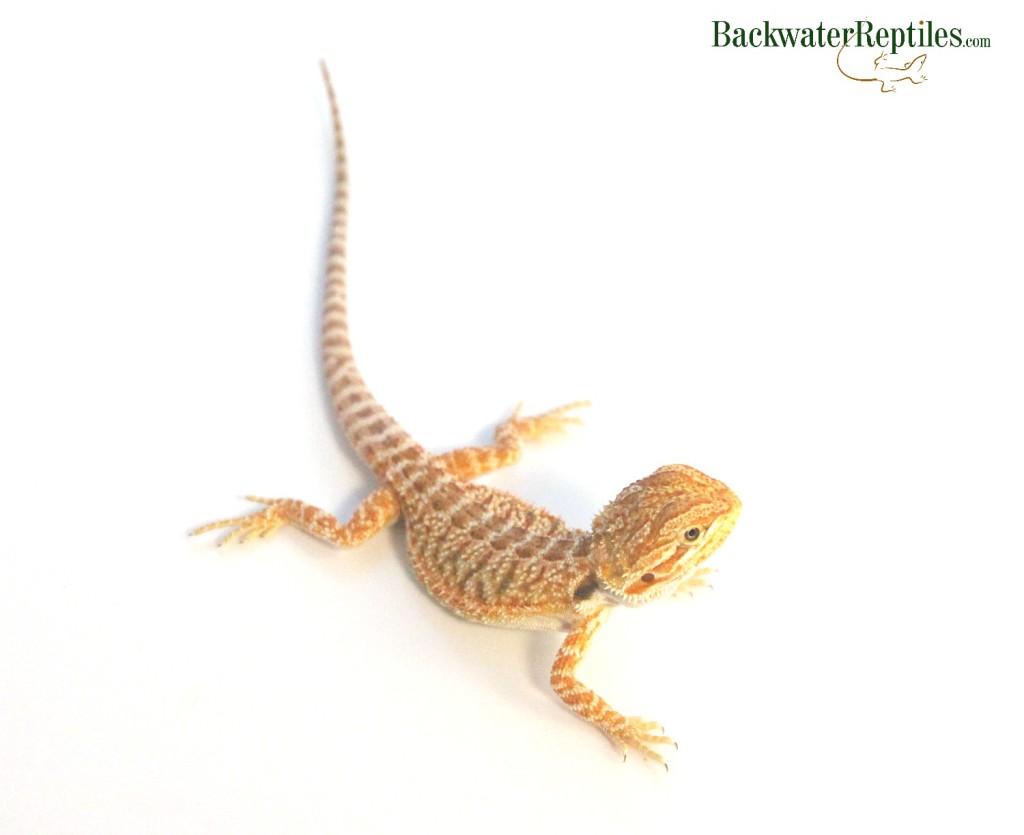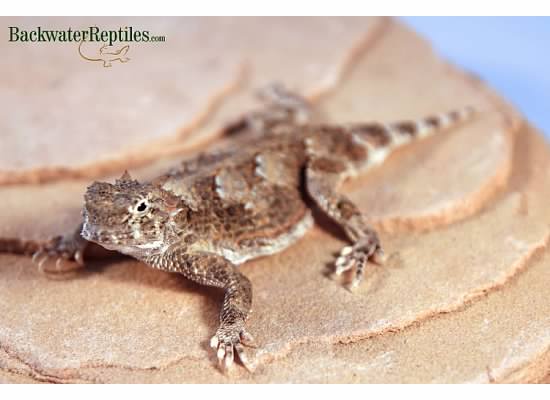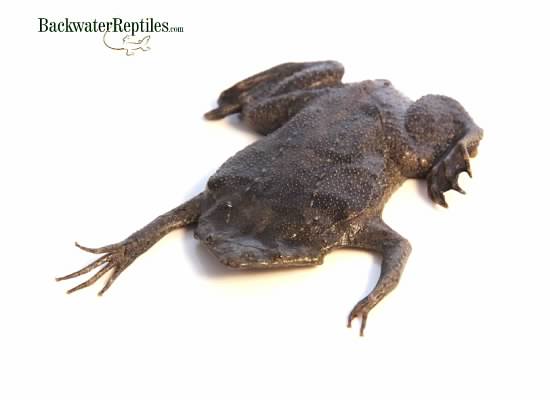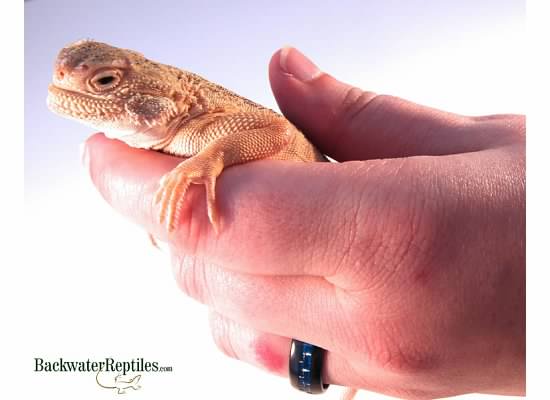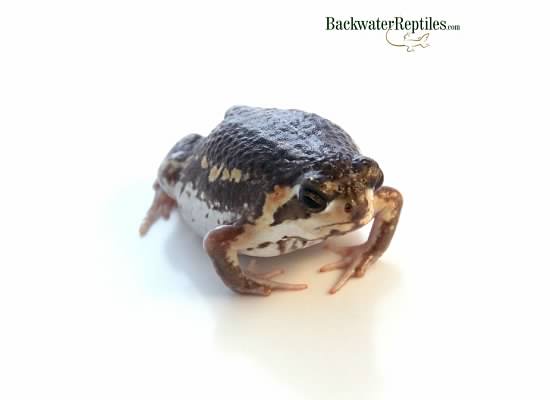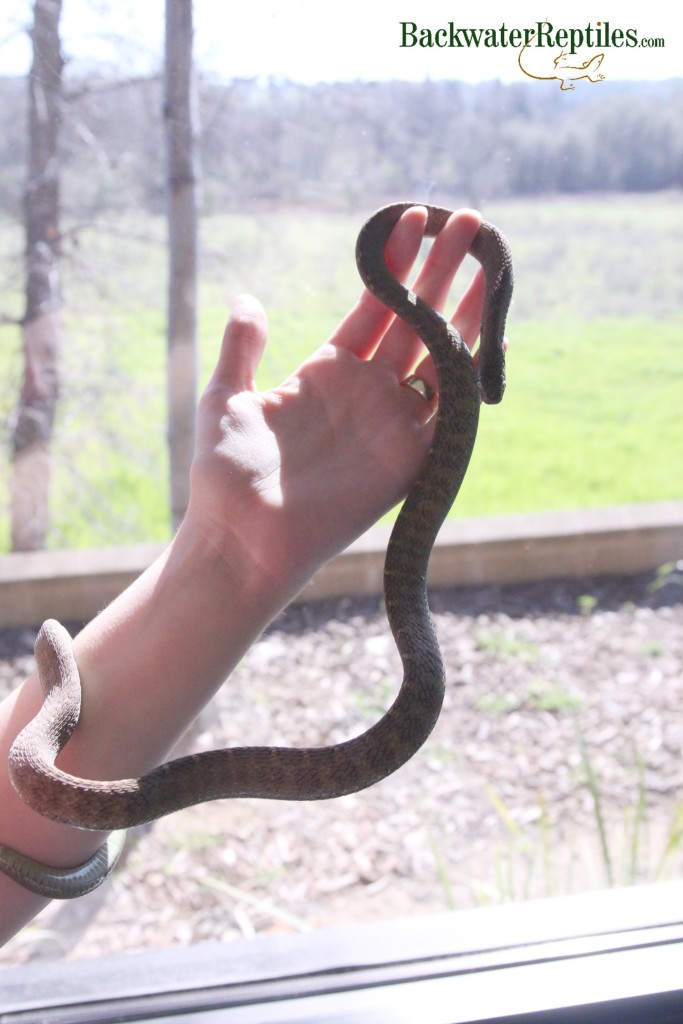The flying gecko, also known as the parachute gecko, is a fascinating lizard with the ability to glide from tree to tree in the wild. But because these geckos are such niche animals with unique behaviors, we recommend reading our Flying gecko care sheet prior to purchasing one.
Think you’ve got the experience but just need some care tips and info on how to care for this quirky gecko? Read on to find out how we care for ours at Backwater Reptiles.
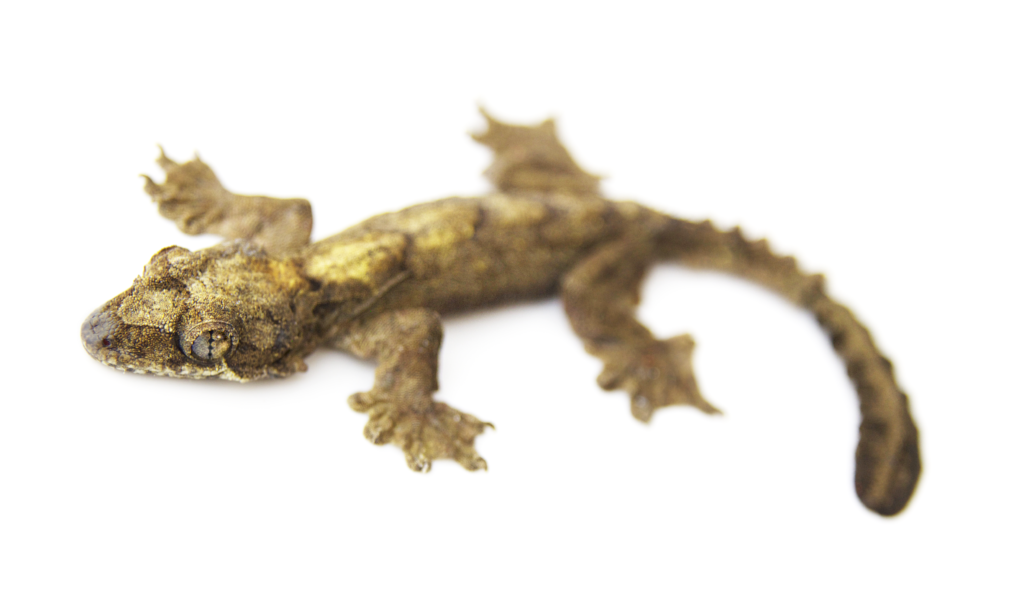
Flying Gecko Physical Attributes
Because it needs to be able to glide, the flying gecko has quite a unique physical appearance. The first thing most people notice about this gecko is its flat, almost serrated-looking tail. This tail is actually able to curl up and fold itself in many different directions.
The flying gecko is also rife with webbing – webbed toes, webbed chin, webbed leg membranes, and flaps on its sides. All of these membranes and webs obviously aid the gecko when it is gliding. What great aerodynamic adaptations!
Brown, black, and beige are the main colors of the flying gecko. Generally, these geckos are brown with darker brown or black mottling or speckles. Their underbellies are usually lighter in color and more of a creamy, beige tone.
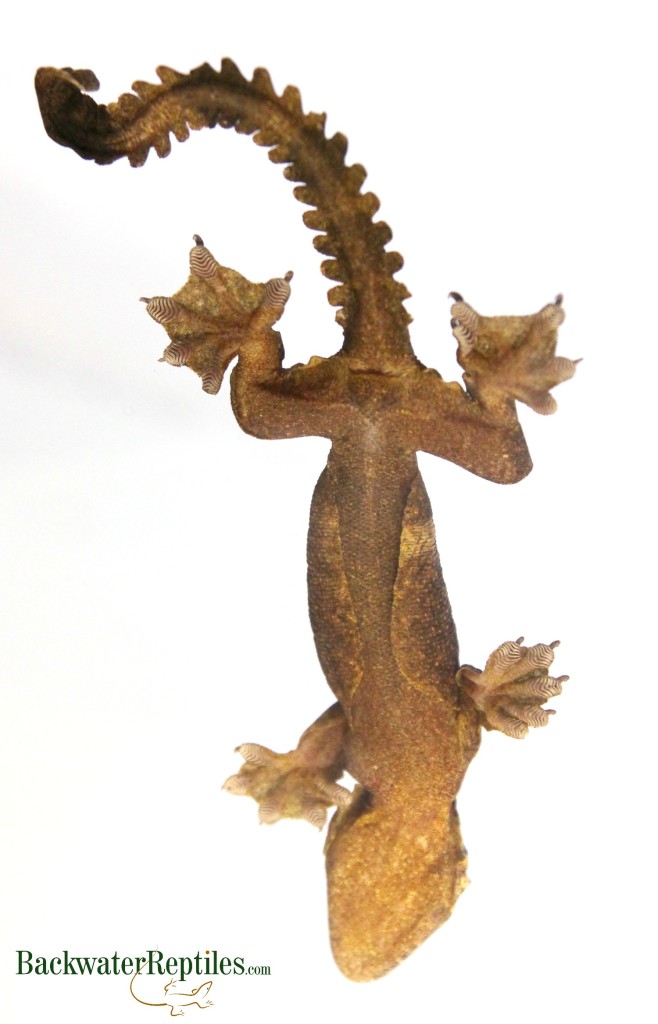
Once mature, flying geckos can range in size from four inches all the way up to seven inches long. They are moderately-sized lizards and will live for around five to eight years in captivity.
Flying Gecko Enclosure Requirements
Unless you can provide a very large, natural outdoor enclosure, it’s actually not recommended that you give your flying gecko room to glide. This is because it has been discovered that in captivity, the geckos will injure themselves by hitting the walls of their enclosure when gliding.
The best size enclosure for a single gecko is a fifteen gallon tank. Make sure that the enclosure has more vertical space than it does horizontal space as this gecko is arboreal. We also highly recommend a cage that has at least one or two mesh sides, even if it’s just the front or top of the cage. This helps regulate humidity and ensures the air inside the humid tank doesn’t get stagnant.
Although the flying gecko is most active at night, you should still have a full spectrum UV light set up. A ceramic heat lamp is also recommended to keep temperatures around 72 to 80 degrees during the day time.
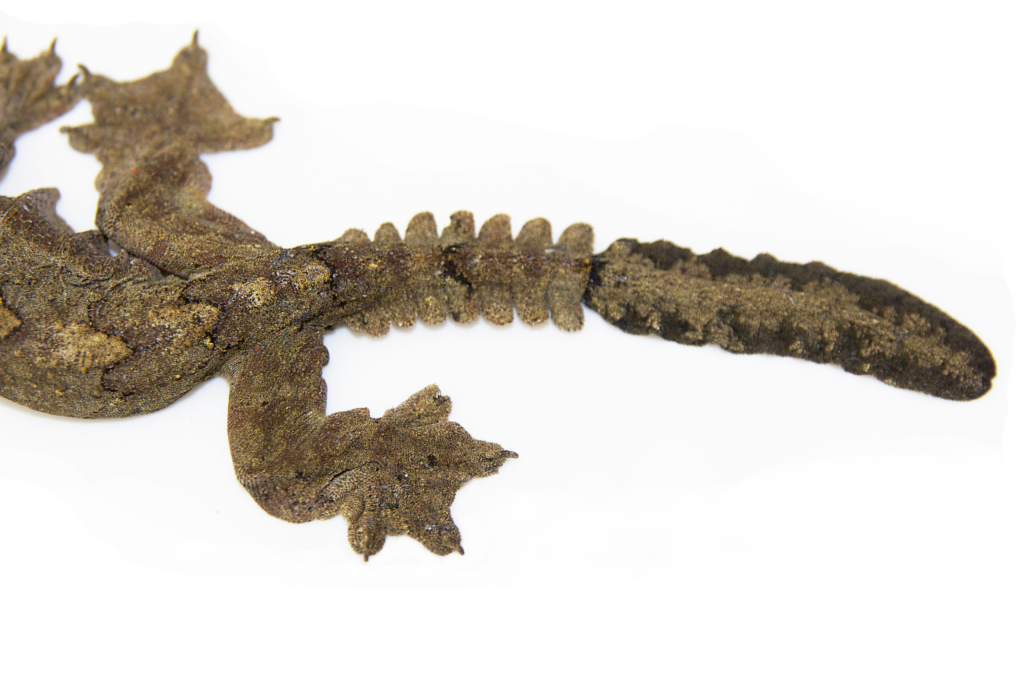
Humidity and moisture are highly important when it comes to keeping your flying gecko healthy. A moderate level of humidity is recommended, which means that you can and should mist the cage on a regular basis. A shallow water dish should also be provided for soaking.
Flying Gecko Feeding
Flying geckos are insectivores. They will do well on a varied diet of crickets, meal worms, wax worms, horn worms, and reptiworms. Some will even accept nightcrawlers.
We recommend feeding your gecko insects that have been gutloaded as these are higher in nutritional value.
Vitamin dusting with a reptile multivitamin is also encouraged on a weekly basis for adults. Calcium dusting on an every other day basis should suffice for growing hatchlings.
Flying Gecko Temperament
You’ll notice right away that the flying gecko is a very “sticky” animal. Although there is not a film or residue that makes its feet feel this way, you will certainly have a tough time getting your flying gecko to let go of your hand or whatever it happens to be perched on. They grab hold and hang on!
Flying geckos are naturally skittish animals and they are very fast. This means that they are not ideal lizards to be handling on a regular basis. Being held stresses them out and they will try very hard to run away from you. We only recommend handling your flying gecko sparingly and make sure that you are not causing the animal undue stress.
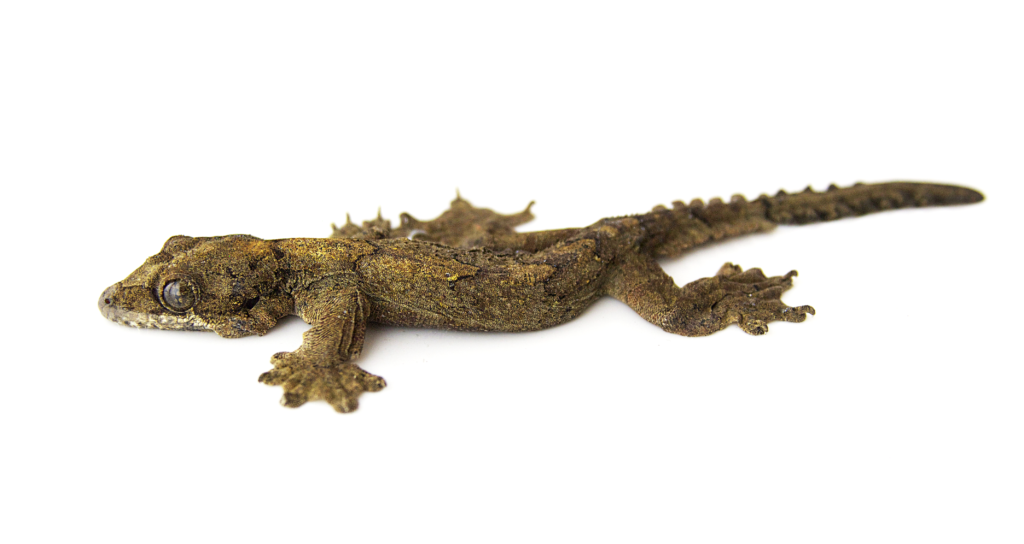
Because they are secretive and timid lizards, don’t be surprised if your flying gecko hisses or snaps at you if you get too close to it. Because these are relatively small lizards, however, if your gecko does attempt to bite you, its teeth are so small that it would be very tough for the gecko to actually injure you.
Conclusion – Flying Gecko Care Sheet
While the flying gecko is certainly a cool lizard to own, because they are not the easiest animal to care for, we recommend that only reptile keepers with plenty of experience with finicky animals own them.
If you are ready to provide the care and attention this tricky gecko requires, Backwater Reptiles has flying geckos for sale.

